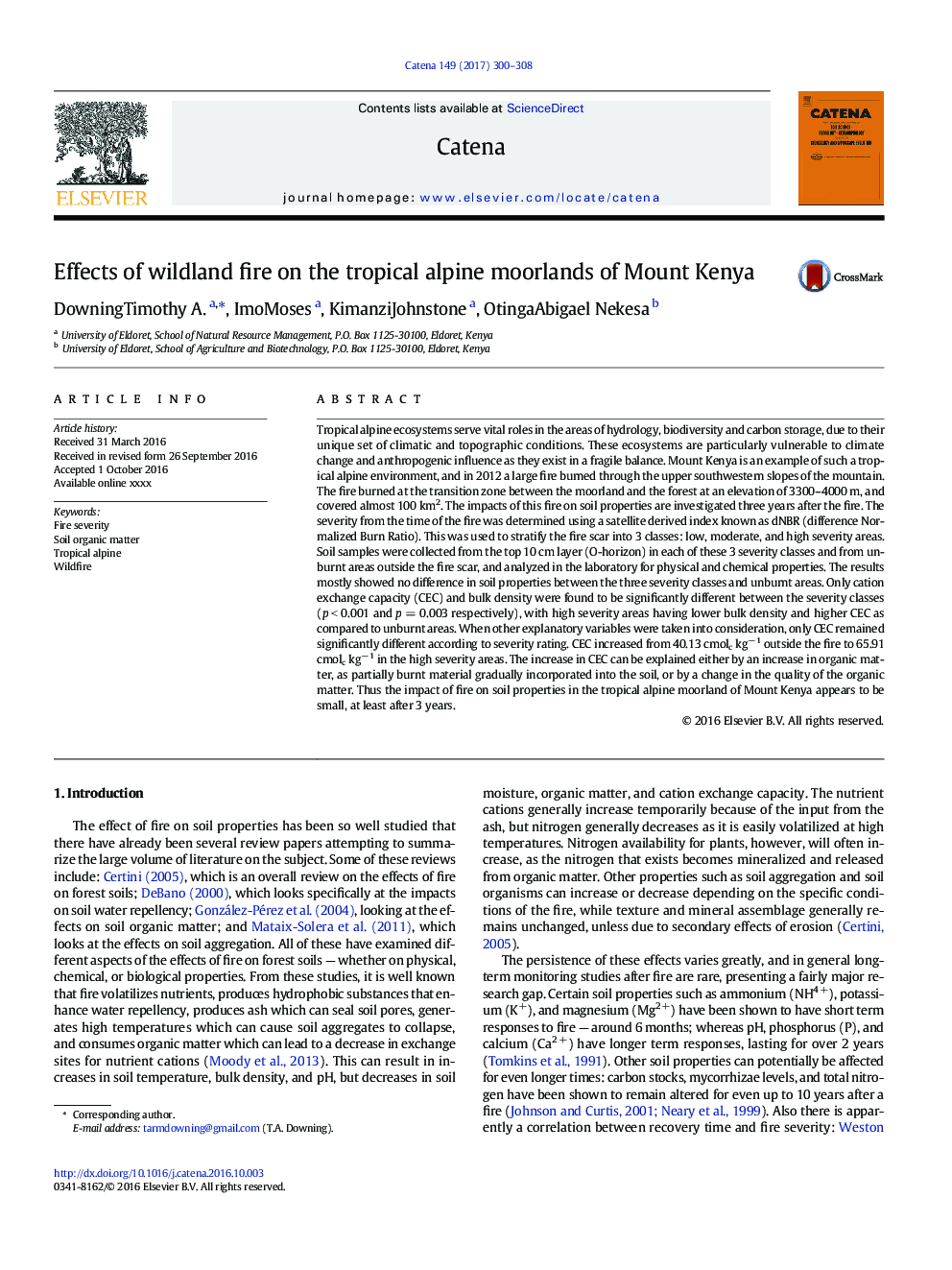| Article ID | Journal | Published Year | Pages | File Type |
|---|---|---|---|---|
| 10997837 | CATENA | 2017 | 9 Pages |
Abstract
Tropical alpine ecosystems serve vital roles in the areas of hydrology, biodiversity and carbon storage, due to their unique set of climatic and topographic conditions. These ecosystems are particularly vulnerable to climate change and anthropogenic influence as they exist in a fragile balance. Mount Kenya is an example of such a tropical alpine environment, and in 2012 a large fire burned through the upper southwestern slopes of the mountain. The fire burned at the transition zone between the moorland and the forest at an elevation of 3300-4000 m, and covered almost 100 km2. The impacts of this fire on soil properties are investigated three years after the fire. The severity from the time of the fire was determined using a satellite derived index known as dNBR (difference Normalized Burn Ratio). This was used to stratify the fire scar into 3 classes: low, moderate, and high severity areas. Soil samples were collected from the top 10 cm layer (O-horizon) in each of these 3 severity classes and from unburnt areas outside the fire scar, and analyzed in the laboratory for physical and chemical properties. The results mostly showed no difference in soil properties between the three severity classes and unburnt areas. Only cation exchange capacity (CEC) and bulk density were found to be significantly different between the severity classes (p < 0.001 and p = 0.003 respectively), with high severity areas having lower bulk density and higher CEC as compared to unburnt areas. When other explanatory variables were taken into consideration, only CEC remained significantly different according to severity rating. CEC increased from 40.13 cmolc kgâ 1 outside the fire to 65.91 cmolc kgâ 1 in the high severity areas. The increase in CEC can be explained either by an increase in organic matter, as partially burnt material gradually incorporated into the soil, or by a change in the quality of the organic matter. Thus the impact of fire on soil properties in the tropical alpine moorland of Mount Kenya appears to be small, at least after 3 years.
Related Topics
Physical Sciences and Engineering
Earth and Planetary Sciences
Earth-Surface Processes
Authors
Downing Timothy A., Imo Moses, Kimanzi Johnstone, Otinga Abigael Nekesa,
